Retro Replay Review
Gameplay
Chicago Guns delivers an action-packed shooting gallery experience that’s both deceptively simple and surprisingly addictive. Players slip into the shoes of a renowned detective in 1920s Chicago, with one mission: clear the city’s streets of notorious bandits and restore order. The core mechanic revolves around three windows—left, center, and right—each guarded by a mix of criminals and innocent bystanders. With every level, you must react swiftly and accurately, pressing keys 4, 5, or 6 to fire the instant a window flashes open.
(HEY YOU!! We hope you enjoy! We try not to run ads. So basically, this is a very expensive hobby running this site. Please consider joining us for updates, forums, and more. Network w/ us to make some cash or friends while retro gaming, and you can win some free retro games for posting. Okay, carry on 👍)
The game’s 40-level structure offers a steady ramp-up in difficulty. Early stages ease you in with slower draw times and fewer windows, but by level 20 you’ll be juggling lightning-fast appearances, multiple targets, and the constant risk of collateral damage. The inclusion of bonus rounds at levels 5, 15, 25, and 35 introduces memorable mini-games that break up the main action, rewarding precision and speed with extra points or temporary power-ups. Meanwhile, the four boss encounters at levels 10, 20, 30, and 40 demand pattern recognition and blistering reflexes to outgun the city’s most dangerous outlaws.
While the gameplay is rooted in classic arcade simplicity, subtle variations keep it from feeling stale. Some levels feature dual-window openings or “decoy” flashes that deliberately bait your trigger finger, forcing you to stay vigilant. Time limits pressure you to balance speed with caution—shooting too hastily means hitting innocents, while hesitating risks letting criminals escape. This push-and-pull of reward and penalty ensures that even seasoned players remain on edge until the final boss battle.
Graphics
Visually, Chicago Guns opts for a stylized, hand-drawn aesthetic that evokes the gritty glamour of the Roaring Twenties. Each of the four distinct graphic environments—from seedy speakeasies and rain-slick alleys to neon-lit jazz clubs—offers its own palette of colors and motifs. Though the game doesn’t rely on photorealism, its bold outlines and period-inspired details effectively immerse you in the prohibition-era underworld.
The window animations deserve special mention: criminals are often introduced with a devilish sneer or a flash of silver at their waist, while innocent characters might glimmer in a softer light, rewarding keen observation. These visual cues aren’t just decorative—they are critical gameplay elements that help you differentiate targets under pressure. Background details like flickering street lamps, billowing smoke, and distant police sirens add atmosphere without distracting from the core shooting mechanics.
Performance-wise, Chicago Guns runs smoothly on a wide range of hardware, maintaining a consistent frame rate even during hectic boss fights. The absence of heavy 3D effects or particle explosions means the action stays crisp and responsive. If anything, the game’s charm lies in its economical use of graphics—every pixel feels deliberately placed to support fast, focused play rather than flashy spectacle.
Story
While Chicago Guns is primarily a reflex-based shooter, it doesn’t skimp on setting up its 1920s narrative. You assume the role of a hard-boiled detective, freshly transferred to Chicago to tackle the city’s spiral of crime under prohibition. Brief text vignettes between levels sketch out rival gangster factions, corrupt officials, and the detective’s own personal stake in restoring justice. Though these passages are concise, they lend a sense of purpose to each raid on the city’s underbelly.
The progression through 40 levels mirrors your detective’s journey from rookie enforcer to legendary crime-fighter. Bonus stages are framed as undercover missions—whether it’s rescuing kidnapped informants or intercepting contraband shipments—and add variety to the otherwise window-shooting gameplay. Boss encounters serve as climactic showdowns against infamous crime lords, complete with one-line taunts and stylized portraits that heighten the drama.
Chicago Guns keeps its story lean but effective, avoiding lengthy cutscenes or clogging the action with exposition. The narrative is presented in short, punchy snippets that accentuate the game’s pulpy mood. For those who crave a deeper mystery, the minimal storytelling leaves room for the imagination, allowing players to mentally fill in the noir-style blanks between shootouts.
Overall Experience
Chicago Guns stands out as a streamlined yet satisfying homage to arcade shooters of yesteryear. Its blend of reflex-driven mechanics, period atmosphere, and escalating challenges make for an engaging play session that’s easy to pick up but hard to master. Whether you’re a veteran of quick-draw games or a newcomer looking for accessible action, you’ll find plenty to love in its bite-sized levels and strategic depth.
The inclusion of bonus and boss stages ensures the pace never becomes monotonous, while the clear visual signals and responsive controls guarantee that skill, not luck, determines your success. The risk-reward dynamic—balancing the urgency to clear levels quickly against the need to avoid innocent casualties—injects genuine tension into each encounter. Even at higher levels, every shot feels meaningful.
Though Chicago Guns may not revolutionize the shooter genre, it refines its core concept with polish and authenticity. The game’s focus on timing, accuracy, and gradual difficulty scaling makes it an ideal choice for players seeking a brisk, replayable challenge. If you’re ready to take on Chicago’s criminal underworld one window at a time, this title offers a compelling ride through the smoky streets of the prohibition era.
 Retro Replay Retro Replay gaming reviews, news, emulation, geek stuff and more!
Retro Replay Retro Replay gaming reviews, news, emulation, geek stuff and more!
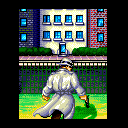
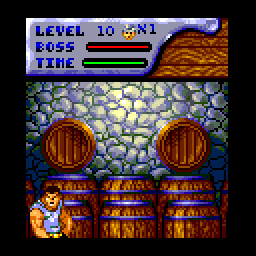
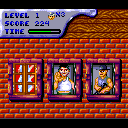
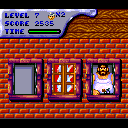
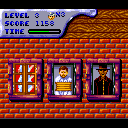



Reviews
There are no reviews yet.